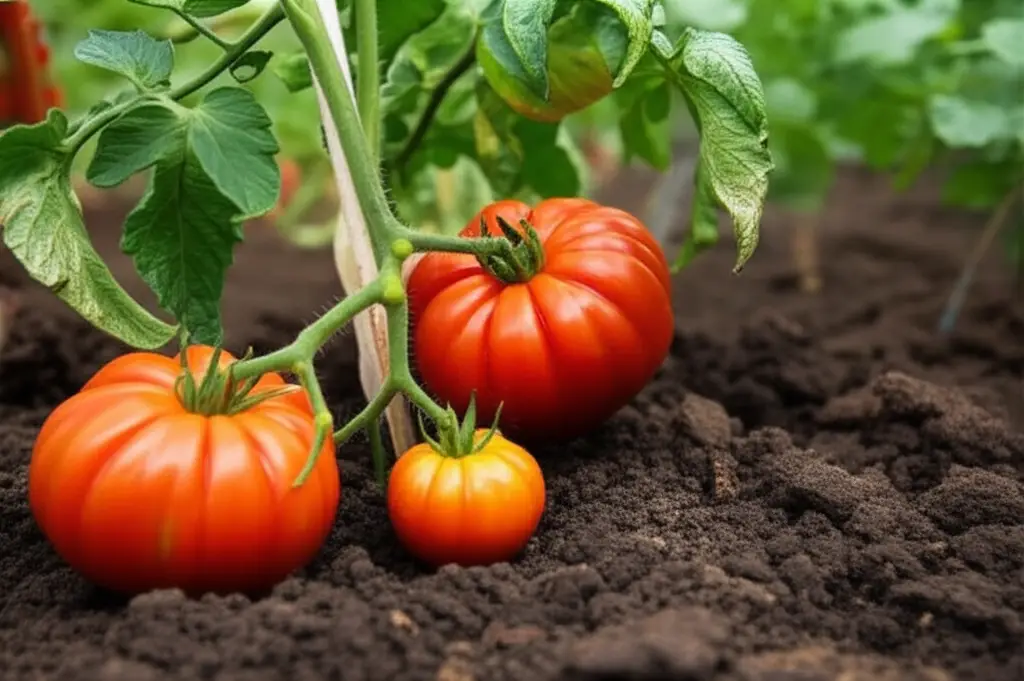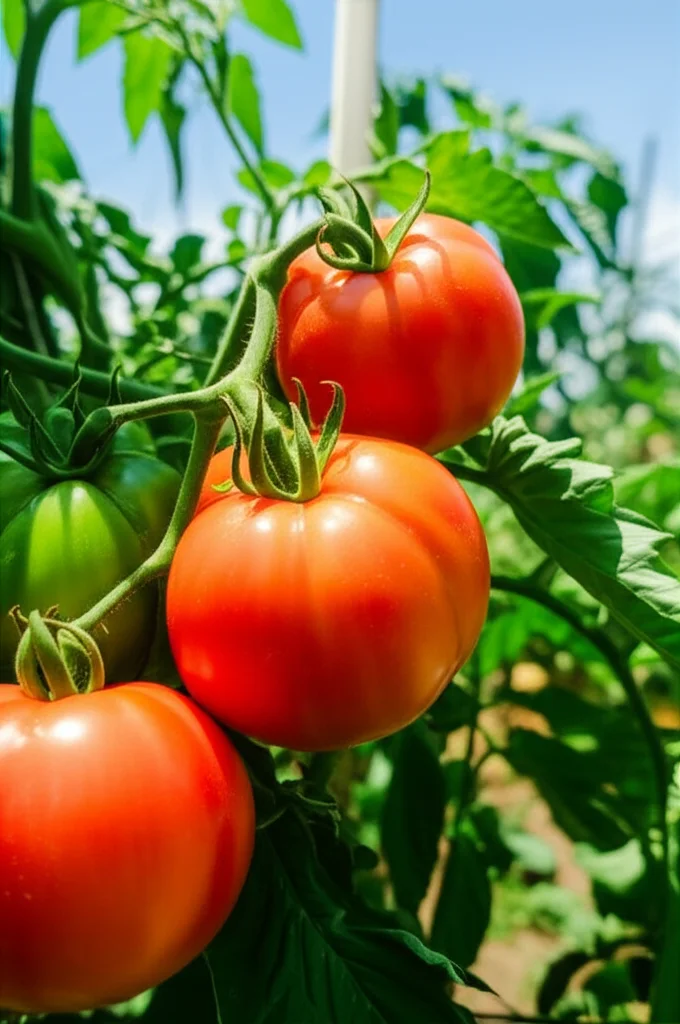Knowing the right time to plant tomatoes is crucial for a successful harvest in California’s diverse climate. This guide provides a comprehensive overview of planting times across different regions, considering factors like frost dates and microclimates, to help you achieve a bountiful tomato crop.
JUMP TO TOPIC
- 1 Introduction: Timing is Everything for California Tomatoes
- 2 Understanding California’s Climate Zones
- 3 When to Plant Tomatoes in California: Regional Breakdown
- 4 Planting Tomatoes: A Step-by-Step Guide
- 5 Tomato Planting Calendar for California:
- 6 FAQs: When to Plant Tomato Plants in California
- 7 Conclusion: Grow a Thriving Tomato Garden in California
Introduction: Timing is Everything for California Tomatoes

California’s Mediterranean climate, characterized by warm, dry summers and mild, wet winters, makes it a haven for tomato growers. However, the state’s geographical diversity means planting times vary significantly. From the coastal fog belt to the inland valleys and mountainous regions, understanding your specific microclimate is key to determining the ideal tomato planting window. Planting too early risks frost damage, while planting too late can result in reduced yields due to excessive heat. This guide helps navigate these complexities and offers tailored advice for different regions.
Understanding California’s Climate Zones
Before delving into specific planting dates, it’s important to recognize California’s diverse climate zones:
- Coastal Regions: Characterized by cool, foggy summers and mild winters.
- Inland Valleys: Hot, dry summers and mild winters with occasional frost.
- Desert Regions: Extremely hot, dry summers and mild to cool winters.
- Mountainous Regions: Cool summers and cold winters with frequent frost.
When to Plant Tomatoes in California: Regional Breakdown
Coastal California
Coastal regions like San Francisco, Monterey, and Santa Barbara experience cooler temperatures due to the ocean’s influence. Planting tomatoes directly in the ground is generally recommended after the last frost, usually between April and May. However, starting seeds indoors 6-8 weeks before the last frost date can extend the growing season and give your plants a head start.
Inland Valleys (Central Valley, Sacramento Valley)
Inland valleys such as the Central Valley and Sacramento Valley have warmer temperatures and longer growing seasons. Direct sowing can begin as early as March in some areas, while others might need to wait until April or May. Starting seeds indoors 4-6 weeks before the last frost is a common practice.
Desert Regions (Palm Springs, Death Valley)
The scorching summer heat in desert regions requires a different approach. Planting tomatoes in early spring (February-March) is ideal to allow the plants to establish themselves before the intense heat sets in. Alternatively, planting in late summer/early fall for a winter harvest can be successful.
Mountainous Regions (Sierra Nevada, Shasta Cascade)
Mountainous regions have shorter growing seasons due to lower temperatures and higher elevations. Planting tomatoes after the last frost, typically from May to June, is essential. Starting seeds indoors 8-10 weeks prior is highly recommended to maximize the limited growing season.
Planting Tomatoes: A Step-by-Step Guide
- Choose the right variety: Select tomato varieties suited to your region and desired characteristics (e.g., determinate, indeterminate, heirloom, hybrid).
- Start seeds indoors (optional): Start seeds in seed trays or small pots 6-8 weeks before the last expected frost.
- Prepare the soil: Amend the soil with compost or other organic matter to improve drainage and fertility.
- Harden off seedlings: Gradually acclimate seedlings to outdoor conditions before transplanting.
- Transplanting: Plant seedlings deeply, burying part of the stem to encourage root development.
- Spacing: Space plants appropriately based on the variety’s growth habit.
- Watering: Water deeply and consistently, especially during dry periods.
- Support: Provide support for indeterminate varieties using stakes or cages.
- Fertilizing: Feed plants regularly with a balanced fertilizer.
- Pest and disease control: Monitor for pests and diseases and take appropriate action.
Tomato Planting Calendar for California:
| Region | Starting Seeds Indoors | Transplanting Outdoors |
|---|---|---|
| Coastal | March – April | April – May |
| Inland Valleys | February – March | March – May |
| Desert | January – February | February – March |
| Mountainous | April – May | May – June |
FAQs: When to Plant Tomato Plants in California
Q: Can I plant tomatoes in California in the winter?
A: Winter tomato gardening is possible in Southern California’s milder climates, particularly in coastal and desert regions.
Q: When is the last frost date in my area of California?
A: You can find your last frost date by checking the website of the National Weather Service or your local agricultural extension office.
Q: What are the best tomato varieties for California?
A: Popular varieties for California include Early Girl, Sun Gold, Beefsteak, and Roma. Consider your regional climate and desired tomato characteristics when choosing.
Q: How do I protect my tomato plants from frost?
A: Cover plants with row covers, cloches, or blankets when frost is expected.
Q: How often should I water my tomato plants in California?
A: Watering frequency depends on various factors, including temperature, soil type, and plant size. Generally, aim to keep the soil consistently moist but not waterlogged.
Conclusion: Grow a Thriving Tomato Garden in California
California’s diverse climate offers ample opportunities for successful tomato gardening. By understanding your region’s specific conditions and following the guidelines outlined in this guide, you can optimize your planting schedule and enjoy a bountiful harvest of delicious, homegrown tomatoes. Remember to select appropriate varieties, start seeds indoors if necessary, prepare your soil, and provide consistent care throughout the growing season for the best results. Happy gardening!

